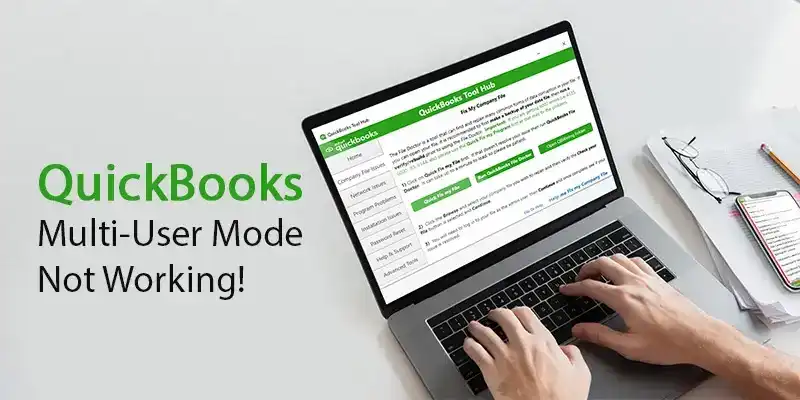
How To Fix QuickBooks Error 1920?
QuickBooks database server manager helps businesses to enable multiple versions of QuickBooks software. And, if you are stuck with the ‘Error 1920’ while starting QuickBooks Database Manager, then you don’t need to worry, we are here to help you.
This error occurs if QuickBooks Database Manager can’t connect to your business file. Read further to fix this error and get the back up of the data.
| Please Note: If you are installing QuickBooks software on your computer and you get this error, then it is recommended to install as a Windows user with Admin rights. |
Use these steps to install or update your current version of QuickBooks.
Step 1: Uninstall QuickBooks Desktop
- First of all, press Windows key + S, then navigate Control Panel and open it.
- In the control panel, click on ‘Programs and Features’ or ‘Uninstall a Program’.
- Click on the ‘Select QuickBooks Desktop’ (version) from the list of installed programs.
- Select Change /Uninstall and follow the onscreen instructions.
Step 2: Use these steps to rename the installation folders
Notes: In case you don’t see or Program Data folder or Application Data, then you need to display hidden files and folders or search for files using Windows.
If you have other Intuit apps installed on your computer, you should only uninstall or rename the QuickBooks version folder found in the Intuit folder: C:\Program Data\Intuit.
- Go to the installation folders and refer to the chart below:
| Windows 10/8/7 | Windows Vista |
|
|
- Open the Run command by pressing Windows key + R on your keyboard.
- Now, enter the location of the folder, then click Enter.
- Next, right-click the folder, and then choose Rename.
- Rename the folder to.OLD.
Step 3: Install QuickBooks Desktop
After you’re done with steps 1 and 2, you can now install your QuickBooks Desktop, use the below-mentioned steps if you don’t have QuickBooks software on your server. However, it is suggested to share your file over the network with the help of the Database Server Manager.
1: Uninstall the QuickBooks Database Server Manager
-
Press the Windows key + R, on your keyboard.
- The Run dialog box opens. Enter appwiz.cpl, then OK.
- Select the QuickBooks Database Server Manager.
- Select Uninstall/Change and follow the onscreen instructions.
2: Rename the installation folders
Notes: If you don’t see the Application Data or Program Data folder, you need to display hidden files and folders or search for files using Windows.
If you have other Intuit apps installed on your computer, you should only uninstall or rename the QuickBooks version folder found in the Intuit folder: C:\Program Data\Intuit.
- Go to the installation folders. Refer to the chart below.
| Windows 10/8/7 | Windows Vista |
| C:\Program Data\Intuit C:\Program Data\Common Files\Intuit C:\Users\[Username]\AppData\Local\Intuit C:\Program Files\Intuit |
C:\Program Data\Intuit C:\Program Data\Common Files\Intuit C:\Users\\AppData\Local\Intuit C:\Program Files\Intuit |
| C:\Program Files\Common Files\Intuit | C:\Program Files\Common Files\Intuit |
- Press the combination of Windows key + R on your keyword to open the run command
- Now, enter the location of the folder, and then Enter.
- In this step, Right-click the folder and choose Rename.
- Lastly, rename the folder to ‘.OLD’.
3: Reinstall QuickBooks Database Server Manager
Steps to Install QuickBooks Database Server Manager
Note: Database Server Manager can be used to run multi-user access in QuickBooks desktop. This manager helps its users to work on the same company file simultaneously.
Step 1: Download and Install Database Server Manager
- Download and Install the Database Server Manager on your server computer. The server computer hosts your company files.
- Important: If you’re an accountant, bookkeeper or someone who hosts more than one version of QuickBooks Desktop on your network, then it is recommended to install them in order. First, install the oldest version first and then end with the most recent version.
- Before starting this step, close all open programs on your server device, including QuickBooks.
- Now, Open the install ‘Setup_QuickBooks.exe’ file you downloaded.
- Complete the process by following the on-screen instructions.
- Now QuickBooks will ask you to choose an install type, select any of ‘Custom’ or ‘Network Options’. Then click on Next. Don’t select Express.
- Choose the preferred option for your network setup and select Next. Both options will install the Database Server Manager. In case, QuickBooks Desktop is already installed, this won’t overwrite any of your existing company file or data.
- In case you want to have QuickBooks Desktop as well as Database Server Manager on your server computer, then, it is recommended to select I’ll be using as well as storing QuickBooks Desktop on this device.
- If you only need Database Server Manager on your server computer, then select I will NOT be using QuickBooks Desktop
- Follow the rest of the onscreen instructions. When you’re ready, select Install. Windows may ask you for permission.
Note: Here you need to know that QuickBooks creates a separate version Windows user for each version of Database Server Manager. For example, Data Server Manager 2018 will be created as a separate version with the name QBDataServiceUser28.
Give user permission to access the desired folders that hold your company files. You can see these users whenever you set your system-level permissions.
Step 2: Set your firewall permissions
You need to check your antivirus and firewall permissions. To run this program you need to make sure that you have given needed permissions to run on your computer.
Step 3: Update-Database Server Manager
The Data Server Manager will be auto-updated whenever you will update QuickBooks Desktop.
Step 4: Use Database Server Manager
After following the above steps you can easily use and update the Database Server Manager.







